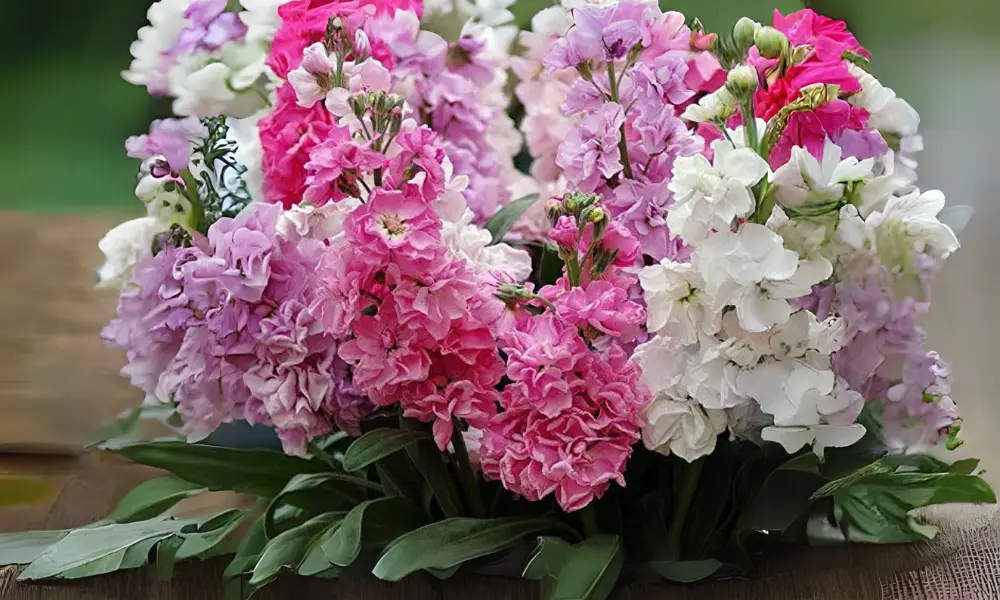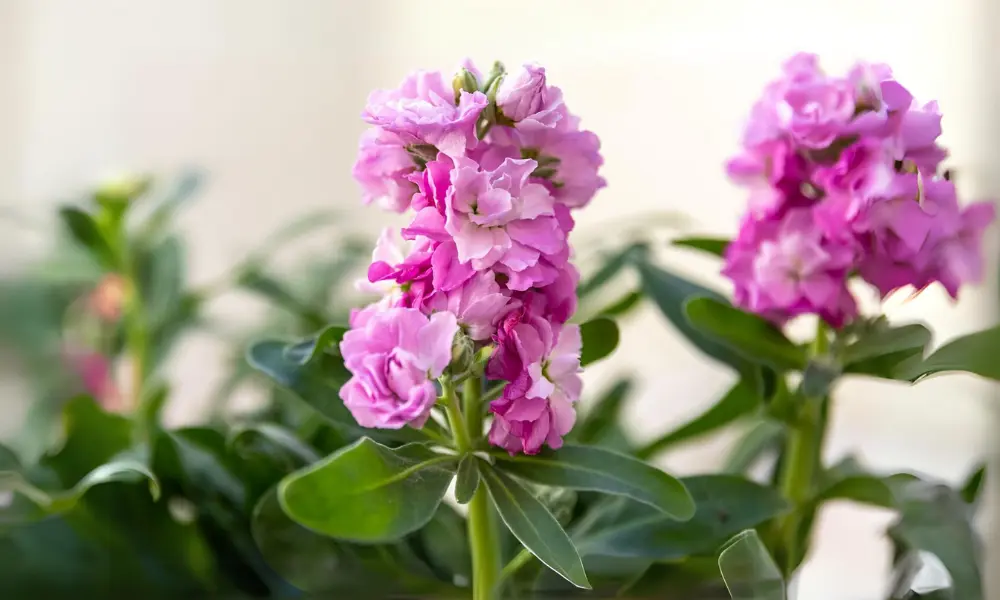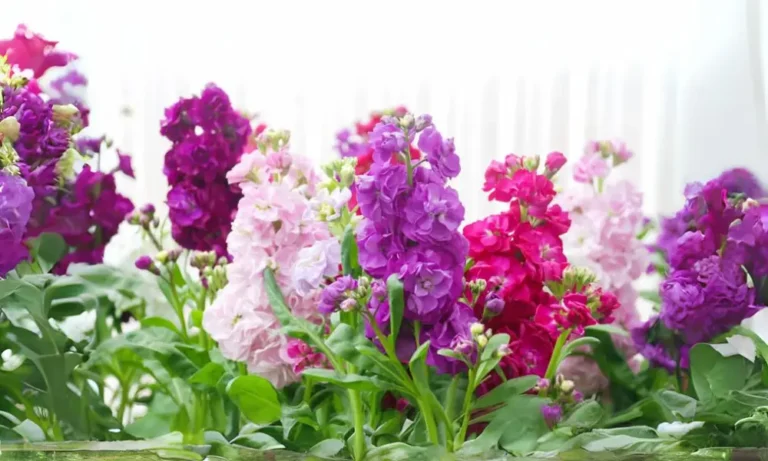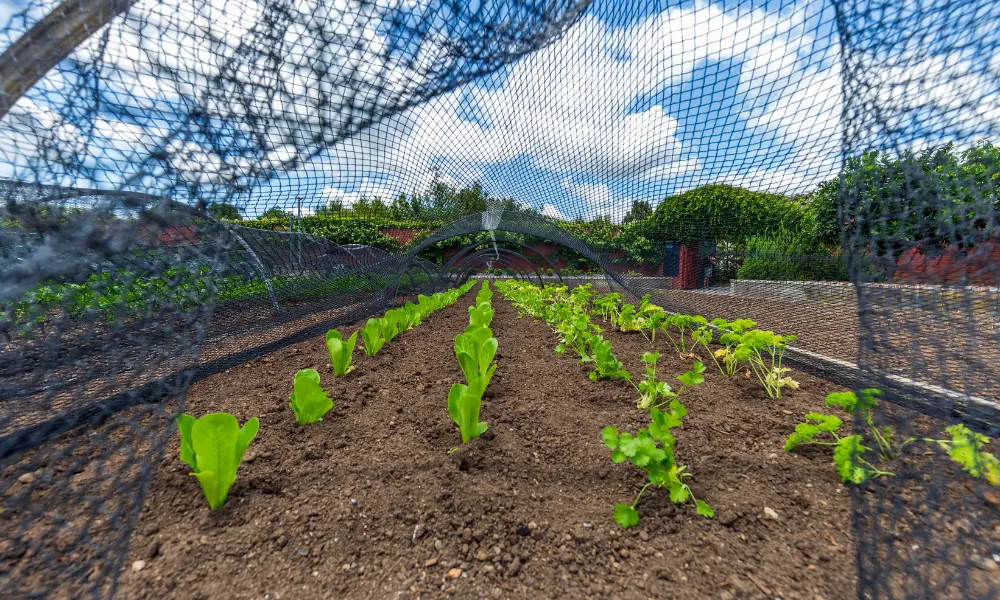If you’re up for a cool garden gig that brings in sweet-smelling spring blossoms, consider dabbling in the world of stock plants. And no, we’re not talking about some generic plant you coddle in a greenhouse for cuttings – this one’s got a legit name: stock flower, also known as Gillyflower in casual conversations and scientifically dubbed Matthiola incana.
A plant that not only sounds cool but smells heavenly too! Yep, that’s the stock flower for you. Now, you might be wondering, what’s the deal with this stock plant? Well, it’s a bit of a floral celebrity with its single and double blooms, making your garden pop with awesomeness.
They’re like a fragrant spice party, kinda like cloves. Picture this: your window boxes or planters at nose height, filled with these gems. The cool thing? They’re like mini spires, and their blooms rock a rainbow of colors. Florists love ’em for their long-lasting flowers and that sweet, intoxicating smell.
Matthiola incana, the botanical rockstar also known as stock. Part of the brassica family, its leaves give off a mini cabbage vibe, and when the flowers take a bow, the remaining foliage looks like brassicas going to seed. With over fifty different Mathiola species, evening scented stock (Mathiola bicornis) steals the spotlight with its larger flowers.
From soft pastels to bold crimson, these flowers are the chameleons of the plant world. Some even grow as tall as 3 feet, while most keep it between 12 to 24 inches. Whether they’re huddled close or spaced out on spiky stems, these blooms know how to make a statement
Stock Plant Overview
You can grow stock plants in your own garden, no green thumb required. They bring a pop of color to your flower arrangements, and get this – they stick around for a long time. Plus, they’re not just pretty, they’re also great for drying out and keeping as a cool decoration.
| Stock Overview | Detail |
|---|---|
| GENUS NAME | Matthiola |
| COMMON NAME | Stock, gilly flower, hoary, ten-weeks |
| BOTANICAL NAME | Matthiola incana |
| PLANT TYPE | Biennial or half-hardy annual |
| LIGHT | Full sun to part shade |
| HEIGHT | 1 to 36 inches |
| WIDTH | 1 to 2 feet |
| MATURE SIZE | 12 to 36 inches tall |
| FLOWER COLOR | Blue, Pink, Red, White, Various (pink, apricot, purple) |
| FOLIAGE COLOR | Chartreuse/Gold |
| SEASON FEATURES | Spring Bloom |
| BLOOM TIME | Spring through summer |
| SPECIAL FEATURES | Cut Flowers, Fragrance, Good for Containers, Low Maintenance |
| PROPAGATION | Seed |
| SUN EXPOSURE | Full sun to part shade |
| SOIL TYPE | Rich and well-drained |
| SOIL pH | Neutral, 6.8 to 7.5 |
| HARDINESS ZONES | 7 to 10 (USDA) |
| NATIVE AREAS | Europe, particularly Mediterranean |
These flowers are not just eye candy, they’re actually edible. Yup, you heard it right. They’ve got this delicate, flowery flavor that’s perfect for tossing into salads or jazzing up your desserts. How cool is that? So, next time you’re thinking of a gift, or just want to spruce up your garden and your plate, give those stock flowers a shot!
Where to Plant Stock?

Wondering where to pop those stock plants? Easy peasy! Stick ’em in a sunny spot or a bit of shade – they love it. Make sure the soil’s not too soggy, though. They’re like Goldilocks – not too wet, not too dry – just right.
These beauties are perfect for your cottage garden, or toss them near your hangout spot. Why? ‘Cause they smell amazing, that’s why! It’s like having your own natural air freshener.
Now, here’s the scoop – usually, folks treat them as one-season wonders, but in zones 7 through 10, they can be real troopers, hanging in there for a couple of years. Call them biennials or short-lived perennials, they’re the cool kids of the plant world.
Don’t limit them to the ground – throw them in pots or flower boxes for some pizzazz. Just pick a pot that’s a bit roomier, like 1 or 2 inches wider than your plant’s future superstar width.
How to Grow Stock Flowers
They pop up annually from seeds to jazz up those empty spaces between your other blooming buddies. And get this – some folks say they’re like the garden’s version of a biennial surprise. In warmer spots, they might even stick around for the long haul, acting all perennial and stuff.
Picture this: spring and summer come around, and bam! Stock flowers show up, putting on a floral fiesta in your sunny garden. But, here’s the secret sauce – you gotta treat them right. Think of it as a VIP spa day for your stock plants.
First things first, they’re not picky about where they chill, but they do appreciate a well-draining soil – none of that soggy business. Keep that dirt slightly damp, and when your flowers start looking a bit tired, give ’em a little trim – it’s like a floral haircut called deadheading. Keeps them looking sharp!
Now, if you’re in a chilly neck of the woods, tuck your stock plants into a cozy nook and throw some mulch on those roots for winter protection. It’s like giving them a warm blanket – because even plants deserve a snug winter.
Stock Plant Care Tips
Maintaining stock flowers becomes a breeze once they’ve settled in. These mature plants are quite resilient to drought, needing minimal attention. Simply indulge in a bit of deadheading to encourage regrowth throughout the season.
Temperature and Humidity
When it comes to the well-being of stock plants, paying attention to temperature and humidity is key. These plants thrive in cool, semi-tropical climates but tend to lose their bloom when the mercury rises above 65 degrees in the summer, causing them to wither. In milder climates, they can brave the winter, earning them the label of “half-hardy” annuals in zones where they can withstand a frost or two.
Ensuring the right environment for your stock plants is crucial for their continued health and vibrancy. Keep these temperature and humidity considerations in mind to help your plants flourish.
Sun Light
When cultivating stock flowers, it’s ideal to provide them with abundant sunlight for optimal growth. While full sun is preferred, these flowers can thrive in partial shade as well, as long as they receive a minimum of a few hours of sunlight each day. To ensure the vibrancy and well-being of your blooms, consider planting stock flowers in an area that receives morning sunlight, rather than the harsh afternoon rays.
Soil and Water
For your stock flowers to thrive, provide them with fertile, damp soil that drains well and has a slightly alkaline or neutral pH, ideally ranging from 6.5 to 7.5. Before planting, turn the soil to a depth of approximately 8 inches, and if necessary, enhance it with compost. If your soil tends to be more acidic, consider incorporating some lime. To maintain optimal moisture levels and ward off weeds, consider applying a layer of mulch to the soil.
Pruning
Maintaining the appearance and promoting continuous growth of your stock plants can be achieved through a simple yet effective practice: pruning. To ensure a neat and vibrant display until the fall, promptly remove spent blooms by either pinching them off between your fingers or, in the case of faded blossoms, cutting off the entire flower spike. When doing so, trim the stalk as close to the base as possible. This helps redirect the plant’s energy towards generating new stalks, contributing to a healthier and more prolific garden.
Fertilizer
Ensuring the optimal growth of stock plants involves a thoughtful approach to fertilization. When planted in suitable soil, these plants generally thrive without the need for additional fertilizer. However, should you choose to provide nourishment, a gentle application of fertilizer is advisable after new growth emerges on young plants. Please adhere to the manufacturer’s instructions carefully.
It is essential to exercise caution in the frequency of fertilizer applications, limiting them to once a month. Monitoring the well-being of the plants is crucial, as excessive fertilizer can lead to root rot. By adopting this balanced approach, you can promote the health and vitality of your stock plants.
Common Pests and Diseases
Various challenges such as gray mold, leaf spot, root rot, fusarium wilt, and verticillium wilt may arise, but the majority of these concerns can be averted by practicing proper watering techniques.
Occasionally, stock plants may encounter unwelcome guests like aphids, flea beetles, spider mites, and whiteflies. If you happen to spot these pests, it is advisable to delicately eliminate them or trim the affected parts of the plant.
Be vigilant against diseases such as fusarium wilt, gray mold, leaf spot, root rot, and verticillium wilt, which may compromise the well-being of your stock. Overwatering is a common factor contributing to these issues, so it is advisable to exercise caution in watering to prevent their occurrence.
Potting and Repotting
When it comes to cultivating stock plants in containers, the process aligns closely with tending to those planted in the ground. It all starts with providing the right environment – ensure the soil is both moist and well-draining, maintaining a neutral pH. Take note of the plant tags to understand the specific needs of your chosen stock plant.
Selecting an appropriate container is crucial. Match it with the growth habits of your stock plant, opting for shorter varieties to prevent the container from becoming too top-heavy.

Chilling Stock for Flowers
Successfully cultivating flourishing stock for your flowers doesn’t have to be a complex endeavor, but it does involve a crucial step – chilling. Ensuring your stock plants receive the right amount of cold is pivotal for optimal care.
For those aiming for early blossoms, a two-week chilling period suffices, while late varieties demand a more extended period of 3 weeks or more. Keep temperatures consistently between 50 to 55°F (10-13°C) during this phase, as colder extremes can harm the roots.
Neglecting this aspect of stock plant care could lead to sparse or even nonexistent blooms. If you reside in an area without naturally cool winters, consider purchasing seedlings that have already undergone cold treatment.
There are practical ways to achieve this cold treatment. You can grow stock in greenhouse tunnels at the appropriate time of year. Alternatively, if you’re a thrifty gardener, planting seeds in winter and hoping for a sufficiently long cold spell can also be effective.
In regions with milder winters, stock plants typically start blooming in late spring. Conversely, in areas prone to winter freezes, expect the delightful blossoms of your growing stock plants to grace your garden from late spring through late summer.




